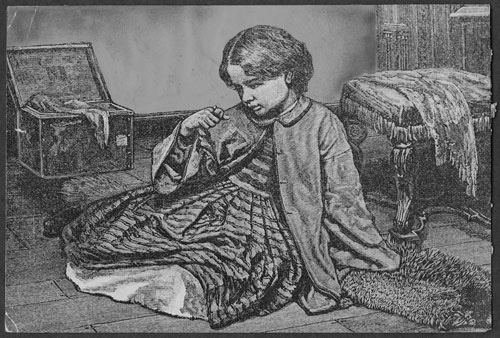Parental Communication and Its Influence on Biracial Identity
Paper presented at the annual meeting of the NCA 93rd Annual Convention, TBA
Chicago, IL
2007-11-15
27 pages
Carolyn Brooks
The Biracial identity development process has long been overlooked in society and in research. Few models exist and those models in existence are mostly descriptive. This paper focused on one of the major influential factors in a child’s identity development process – parental communication. The Parental Racial Socialization Communication Model (PRSC) is proposed. A parent’s view of the child’s Biracialness and view of the world impact two dimensions that construct a parent’s communication style. Those two dimensions are the approach technique and valence of racial socialization. Four parental racial socialization styles are created from those two dimensions and are examined as predictors of the child’s ethnic identity label (border, protean, transcendent, and traditional) and their racial-esteem (feelings associated with the label). This model is helpful for counseling practitioners working with this population and for the parents of Biracial children who want information on how best to communicate with their children. The Parental Racial Socialization Communication Model is a needed addition to the limited literature on Biracial identity development.
Introduction
A topic that has gained much interest over the past few decades is that of Biracial identity. The 2000 Census, which was the first Census providing individuals with the option of identifying with more than one racial group, made it clear that the number of Biracial individuals in the United States is increasing rapidly (Buckley & Carter, 2004). Before this, the historical One-Drop Rule, which stated that an individual with as little as one drop of Black blood would be considered Black, was prevalent (Rockquemore & Brunsma, 2004). Therefore, some concluded that Black identity models were sufficient for Black/White Biracial individuals. In the 1980’s, researchers began to recognize that Biracial individuals experience racial issues differently than Blacks and have begun to delve into various investigations to see what factors influence Biracial identity development. (Rockquemore & Brunsma, 2004).
The concept “Bi-racial identity,” however, is rarely defined or understood in any consistent manner in the existing literature. In many ways, Biracial identity appears to be a primitive term. However, various researchers examine Biracial identity in quite dissimilar ways, suggesting that the term Biracial identity is far from being understood. I define Biracial identity as an “emergent category of identification” (Rockquemore, 1998, p. 199) – singular, border, protean, or transcendent – for people with parents that are of “two different socially designated racial groups” (Root, 1996, p. ix). This identification, from which one attempts to gain a sense of self, is a choice based on a continuous process of interactions with one’s family, social network, and society, which are largely influenced by one’s appearance. The central question to be explored here is how parents of Biracial children communicatively influence their child’s Biracial identity development.
This question is not one that appears in most of the literature on this topic. The majority of the models proposed in this field are descriptive, based on qualitative data, and lack process. Thus, an understanding of what factors and how the factors influence Biracial identity has not yet been achieved. Although prior work has primarily been descriptive, they provide a substantial foundation upon which more predictive models can be built (Poston, 1990). The literature on racial identity suggests that parental influence is important in the identity development of their children, as parents are the “primary socializing agents” of their children (Hughes, 2003, p. 15). Hence, the scope of this paper is to examine one of those factors – parental influence and develop a model that has a process and predictive power. The following review of the Biracial identity literature will reveal just how integral parental influence seems to be in the racial identity process for Biracial children…
Read the entire paper here.
